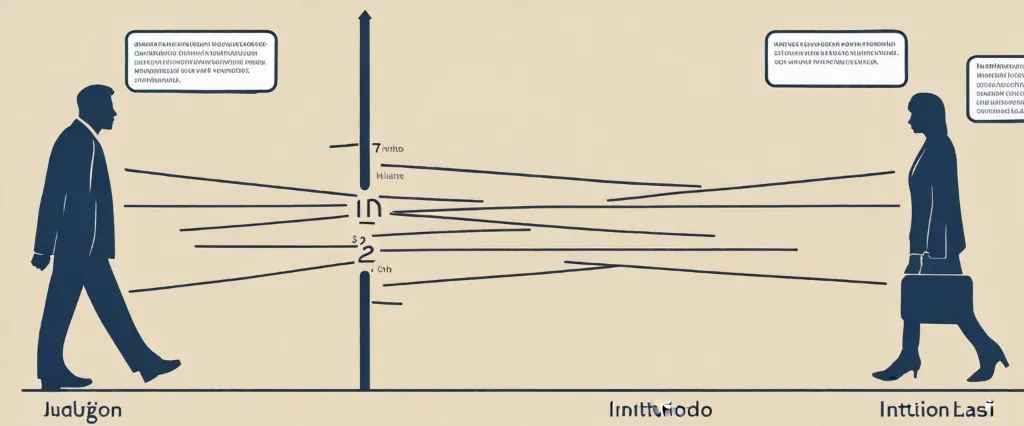In “The Formula: The Universal Laws of Success,” Albert-Laszlo Barabasi delves into the captivating world of success and unravels the hidden patterns that underlie it. Barabasi, a renowned network scientist and professor, explores the intricacies of achievement, urging us to abandon conventional wisdom and embrace scientific principles to understand success better. With groundbreaking research and insightful anecdotes, Barabasi challenges our preconceived notions of individual merit, offering us a profound understanding of the interconnectedness and predictability of success in various domains.
Chapter 1: The Power of Networks: Unveiling the Formula
Chapter 1: The Power of Networks: Unveiling the Formula explores the concept of networks and their importance in various aspects of life, as discussed in the book The Formula by Albert-Laszlo Barabasi. Barabasi highlights the transformative power of networks and how they can be applied to our understanding of success, innovation, and human behavior.
The chapter begins by introducing the reader to the idea that everything is interconnected. Barabasi explains that the concept of networks is not limited to the digital world but is present in various natural and man-made systems. He emphasizes how networks shape our world, from the connections between neurons in our brain to the links between websites on the Internet.
The author introduces us to different types of networks, such as social networks, biological networks, and technological networks. He delves into the mathematics behind these networks, highlighting the principles of connectivity and how they influence the behavior of nodes within the system.
Barabasi then moves into discussing the concept of hubs, which are highly connected nodes that play a crucial role in a network’s structure and functionality. Using examples like airports, where a few major hubs have a disproportionate influence on the flow of flights, Barabasi uncovers the power and significance of hubs in controlling information and resources.
The chapter concludes by presenting the idea that networks may follow a universal formula, known as the power-law distribution. This formula allows us to predict how information, wealth, and success are distributed within a network. Barabasi argues that understanding this formula can help us gain insights into how fame, innovation, and even viral outbreaks occur.
In summary, Chapter 1 of The Formula establishes the significance of networks and their impact on various domains. It establishes the foundation for the subsequent chapters, where Barabasi explores the practical applications of network science in understanding success, pattern formation, and predicting future trends.
Chapter 2: The Scale-Free Nature of the World
Chapter 2: The Scale-Free Nature of the World in the book “The Formula” by Albert-Laszlo Barabasi delves into the concept of scale-free networks and their prevalence in various aspects of our world, ranging from social networks to biological systems.
Barabasi begins by explaining the traditional view of networks, characterized by a bell-shaped curve known as the Gaussian distribution. This distribution assumes that the majority of elements in a network have a similar number of connections. However, Barabasi challenges this notion by introducing the concept of scale-free networks, which follow a power law distribution.
In a scale-free network, there are a few highly connected nodes, known as hubs, which dominate the rest of the network. These hubs exhibit a higher number of connections compared to the average, influencing the entire structure of the network. To illustrate this, Barabasi cites various examples, such as the World Wide Web, where a handful of webpages attract an overwhelming majority of links.
Scale-free networks are not limited to the virtual realm. Barabasi also explores their presence in other domains, such as collaboration networks, where a small number of individuals collaborate with a large number of others, and biological systems, with a few genes or proteins regulating critical functions.
Understanding the scale-free nature of networks has significant implications. By identifying and targeting the hubs in a network, one can have a disproportionate impact on the overall system’s behavior. Barabasi explains how this knowledge can be applied in diverse fields, including marketing, disease prevention, and social influence.
Overall, Chapter 2 of “The Formula” provides an intriguing exploration of scale-free networks, challenging the traditional assumptions of network theory and highlighting their widespread presence in various aspects of our world.
Chapter 3: The Rich Get Richer: Preferential Attachment
Chapter 3 of “The Formula” by Albert-László Barabási, titled “The Rich Get Richer: Preferential Attachment,” explores the concept of preferential attachment in various systems. The author introduces this idea by examining how certain individuals or entities gain disproportionate success in different areas.
Barabási begins by discussing the influential work of Derek de Solla Price, who observed that in scientific research, famous scientists tend to produce more influential papers. He explains how popularity is crucial in the success of scientific papers, as those already cited are more likely to be cited again. This phenomenon, termed preferential attachment, is not exclusive to scientific research but can be found in various other fields as well.
The author highlights how preferential attachment models can help explain the distribution of wealth in society. Using the example of wealth distribution in the United States, Barabási demonstrates that rich individuals accumulate wealth far beyond what random income allocation would suggest. Preferential attachment mechanisms also play a role in the success of companies, social networks, and cultural phenomena, such as the popularity of books or movies.
Throughout the chapter, the author emphasizes that preferential attachment is not solely driven by the quality or intrinsic value of an entity but rather by its existing popularity. This concept challenges the prevailing belief that success is solely achieved through talent or merit. Understanding preferential attachment and its impact on various systems allows for a deeper understanding of success and wealth distribution and can potentially inform strategies to enhance equality and efficiency in different domains.
Chapter 4: The Birth of Networks: Growth and Connectivity

Chapter 4: The Birth of Networks: Growth and Connectivity from the book “The Formula” by Albert-Laszlo Barabasi, explores the origins and development of networks. Barabasi delves into the gradual emergence of connectivity in various systems, ranging from biological networks to the internet.
The chapter begins by introducing the concept of preferential attachment, a fundamental principle underlying network growth and connectivity. Barabasi explains that this mechanism, whereby nodes with a higher number of connections attract more links, plays a pivotal role in shaping the structure of networks. Moreover, he highlights the significance of initial conditions, as they greatly influence the evolution of a network.
Furthermore, Barabasi explores the conditions necessary for networks to form, using the example of the World Wide Web. He discusses how the web transitioned from being a small-scale network to a global network, demonstrating the effect of preferential attachment in driving growth and connectivity.
The chapter also delves into biological systems and the complex networks they form. Barabasi draws attention to the intricate structure of protein networks and explores how studying them can yield insights into diseases and drug discovery. He highlights the role of hubs, highly connected nodes, in maintaining the robustness of biological networks.
As the chapter progresses, Barabasi explores the connection between network theory and social systems. He explains how the emergence of social networks and their connectivity patterns can be analyzed and understood using the principles of preferential attachment.
Overall, Chapter 4 provides a comprehensive overview of the birth and growth of networks in various domains, deciphering the mechanisms behind their connectivity and showing their fundamental role in shaping our interconnected world.
Chapter 5: The Hidden Laws of Success: Network Effects
Chapter 5 of “The Formula” by Albert-Laszlo Barabasi, titled “The Hidden Laws of Success: Network Effects,” delves into the concept of network effects and its impact on achieving success. Barabasi introduces the idea that success is not solely determined by individual characteristics or talent but is heavily influenced by the networks and connections in which individuals operate.
The chapter unveils Barabasi’s groundbreaking research on the careers of renowned scientists and artists, revealing that individuals who are well-connected tend to achieve greater success compared to those with similar talents but fewer connections. He explores an underlying principle known as the Matthew effect, where those who already possess success or fame are more likely to gain additional opportunities and recognition. Essentially, success begets success.
Barabasi highlights the importance of the rich-get-richer phenomenon in network dynamics. As individuals gain more connections and exposure, they become more visible, leading to further opportunities and collaborations. This network effect amplifies their success and enables them to enjoy an enhanced competitive advantage in their respective fields.
Moreover, the chapter emphasizes the role of preferential attachment, which denotes that individuals tend to connect more often with already successful or prominent figures. This behavior further solidifies the unequal distribution of success, as it perpetuates the success of individuals who are already well-connected.
By shedding light on these hidden laws of success driven by network effects, Barabasi underscores the significance of not only talent but also social connections and interactions. The chapter serves as a wake-up call, urging readers to acknowledge and leverage the power of networks to unlock their full potential and enhance their chances of success.
Chapter 6: The Structure of Networks: Small Worlds and Hubs
Chapter 6 of “The Formula” by Albert-Laszlo Barabasi delves into the structure of networks, primarily focusing on two key concepts: small worlds and hubs. Barabasi explores how these concepts relate to various interconnected systems, from social networks to the internet.
The chapter begins by introducing the concept of small worlds, which are networks characterized by a vast number of connections between nodes, enabling efficient and quick communication. Barabasi uses the famous six degrees of separation theory, popularized by Stanley Milgram’s experiments, to illustrate the interconnectedness of human networks. He explains that, due to the high clustering and short average path length found in small worlds, information can spread rapidly across these networks.
Barabasi then shifts his focus to hubs, which are nodes in a network that have an exceptionally large number of connections. Hubs play a crucial role in network dynamics by facilitating the flow of information, resources, and influence. The author highlights the existence of scale-free networks, where the distribution of connections follows a power law, meaning that a few hubs possess the majority of connections while most nodes have relatively few.
Through various examples, such as the discovery of the World Wide Web’s hub structure and the study of citation networks in scientific academia, Barabasi emphasizes the significance of hubs in different fields. He discusses how understanding hubs can help assess the vulnerability of a network to targeted attacks, identify key players in a social network, and even uncover important genes in biological systems.
In summary, Chapter 6 of “The Formula” explores the structure of networks, emphasizing the importance of small worlds and hubs. Barabasi reveals how these concepts shape communication, spread of information, and overall efficiency in various interconnected systems, providing valuable insights into the dynamics and functioning of networked environments.
Chapter 7: Navigating Complexity: Robustness and Fragility
Chapter 7: Navigating Complexity: Robustness and Fragility from the book “The Formula” by Albert-Laszlo Barabasi delves into the concept of robustness and fragility in complex systems. Barabasi explores how the interconnectedness and interdependence of various factors within a system can affect its resilience.
Barabasi begins by highlighting the paradox of robustness and fragility, wherein seemingly strong systems can unexpectedly crumble due to unforeseen circumstances. He emphasizes that robustness is not a fixed characteristic but rather a dynamic quality that evolves as the system’s complexity increases.
The author uses various examples to illustrate the concept of robustness. One such instance is the World Wide Web, which was initially considered highly robust due to its distributed nature. However, as it developed, it became more fragile as certain key websites and search engines gained significant influence, making the web vulnerable to their failure.
Barabasi explains the phenomenon of “preferential attachment” and its impact on robustness. Preferential attachment refers to the tendency of nodes in a network to prefer connecting to already well-connected nodes, leading to the formation of hubs. While this promotes robustness by enhancing accessibility and connectivity, it also increases the system’s vulnerability since the failure of a hub can disrupt the entire network.
Furthermore, the author explores how randomness and interconnectivity affect system robustness. He explains that adding randomness to networks can improve robustness by creating redundancy and alternative pathways. However, excessive randomness can also lead to fragility as increased connections can amplify the spread of failures.
Overall, Barabasi emphasizes the importance of achieving a balance between robustness and fragility in complex systems. He suggests that understanding the underlying principles governing complex systems and their dynamics can help navigate and strengthen these systems in the face of uncertainties and potential failures.

Chapter 8: Applying the Formula: Insights and Applications
Chapter 8 of “The Formula” by Albert-Laszlo Barabasi delves into the practical application of the formula, exploring the insights it offers and the diverse range of fields it can be applied to. The chapter is centered around three major themes: predicting failure, the importance of an empirical approach, and the impact of intermediaries.
Barabasi emphasizes the formula’s ability to identify signs of failure in various systems, including companies, products, and individuals. By analyzing the rise and fall of firms such as Enron and Blockbuster, he emphasizes how the formula’s parameters, such as network size and growth, can provide hints about potential downfall. Through understanding the dynamics of success and failure, organizations can make more informed decisions and take corrective actions.
An empirical approach is also highlighted, illustrating the significance of data-based decision making. Barabasi argues that relying solely on intuition or personal opinions can lead to biased outcomes, whereas an empirical approach ensures objectivity. Furthermore, he demonstrates how the formula can be calibrated using real-world data, making it applicable across an array of domains.
Additionally, intermediaries are explored as vital agents in network dynamics. Barabasi illuminates their importance in facilitating connections and enhancing the flow of information, and their ability to influence individuals or organizations’ success. Through case studies of influential intermediaries such as agents and talent managers, he illustrates how they act as the linchpin in expanding networks and fostering success.
In summary, Chapter 8 of “The Formula” dives into the practical applications of the formula, emphasizing its predictive capabilities, the importance of empirical approaches, and the role of intermediaries. By understanding the insights and applications provided by the formula, organizations and individuals can make more informed decisions, enhance their networks, and increase their chances of success.
After Reading
In conclusion, “The Formula” by Albert-Laszlo Barabasi sheds light on the hidden patterns and formulas that govern success in various domains, such as sports, finance, and technology. Through insightful analysis and real-world examples, Barabasi presents the concept of preferential attachment and the crucial role of networks in predicting achievement. He also emphasizes the importance of early career choices and cumulative advantages in shaping one’s path to success. By unveiling the scientific principles that underlie success, Barabasi provokes readers to rethink the notion of individual merit and recognize the powerful impact of network connections on our lives. Ultimately, “The Formula” provides valuable insights into understanding and navigating the complex dynamics of success in an interconnected world.
1. Originals: How Non-Conformists Move the World” by Adam M. Grant: If you enjoyed “Give and Take,” you’ll appreciate this book by the same author. “Originals” explores how individuals can challenge the status quo, generate new ideas, and drive meaningful change in their personal and professional lives.
2. Option B: Facing Adversity, Building Resilience, and Finding Joy” by Sheryl Sandberg: Building upon the themes covered in “Lean In,” Sandberg’s “Option B” offers a powerful exploration of resilience in the face of adversity. Drawing from personal experiences and extensive research, this book provides practical advice on overcoming obstacles and finding happiness in the midst of hardship.
3. The War of Art: Break Through the Blocks and Win Your Inner Creative Battles” by Steven Pressfield: Similar to “The Path of Least Resistance,” “The War of Art” delves into the creative process and the obstacles that often hinder our progress. Pressfield offers insights and strategies to help readers overcome self-doubt, procrastination, and other forms of resistance, encouraging them to fully embrace their creative endeavors.
4. Grit: The Power of Passion and Perseverance” by Angela Duckworth: Expanding on the principles discussed in “The Formula,” Duckworth’s “Grit” explores the vital role of determination and perseverance in achieving long-term success. Drawing from research and captivating anecdotes, this book inspires readers to develop their passion, harness their grit, and cultivate a growth mindset.
5. The Power of Habit: Why We Do What We Do in Life and Business” by Charles Duhigg: In “The Power of Habit,” Duhigg explores the science behind how habits are formed and the impact they have on our lives. This book provides practical insights and strategies to help readers identify and change their habits, leading to personal and professional transformation.
These recommendations offer a diverse range of insights, covering topics such as productivity, resilience, creativity, perseverance, and habit formation. Each book builds upon the ideas explored in “The Formula,” providing valuable perspectives on personal and professional growth.



